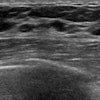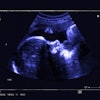
ORLANDO - Three-dimensional power Doppler ultrasound is better at detecting and ruling out ovarian cancer than conventional ultrasound, according to a Northwestern University study presented at the American Institute of Ultrasound in Medicine meeting on Monday.
Specifically, researchers determined that 3D ultrasound excels at defining the morphological and vascular characteristics of a variety of ovarian lesions, including cystic, multicystic, complex, and solid masses. In addition, 3D’s strongest advantage is in correctly identifying patients who do not have the disease.
In the study, 71 women with pelvic masses underwent preoperative evaluation with both conventional and 3D ultrasound. At surgery, 14 of the women had cancer.
Conventional ultrasound identified 40 masses as possibly cancerous, which, when compared to the surgical gold standard, worked out to a sensitivity of 100%, a specificity of 54%, and positive predictive value of 35% for the imaging modality.
Three-dimensional ultrasound, however, was more specific, finding 28 cases of possible cancer, which works out to a sensitivity of 100%, a specificity of 75%, and positive predictive value of 44%.
But despite 3D’s impressive showing, it shares a simple limitation with many other ultrasound procedures.
"The experience of the sonologist helps determine whether the test can detect cancer," said Dr. Pedro Escobar of Northwestern University’s department of obstetrics and gynecology.
Escobar also said that the effectiveness of the test hinges on the presence of central blood flow. For example, in one complex mass measuring roughly 8 x 9 cm, 3D power Doppler was able to image the large vascular network feeding the tumor, he said.
The research, which was funded by a National Cancer Institute grant, is part of the National Ovarian Cancer Early Detection Program’s evaluation of whether 3D ultrasound might play a role in the workup of ovarian cancer. The government’s interest in power Doppler as a screening tool dates back to 1995, when the National Institutes of Health recognized that the technology may improve the specificity of detecting ovarian cancer, but warned that it is still only investigational.
And it appears the investigation isn’t over, even with this study. One critic at the AIUM presentation noted that despite using a high-risk population of patients with a suspicion of cancer who were referred by gynecologists, the procedure failed to obtain a high negative predictive value. Escobar said, however, that his study wasn’t designed to gauge the technique’s effectiveness as a screening tool.
The study earned Escobar an AIUM New Investigator award, which is awarded to promising new clinical researchers.
By Dan Krotz
AuntMinnie.com staff writer
March 13, 2001
Related Reading
Tumor volume may help determine cervical cancer prognosis, March 6, 2001
Transvaginal ultrasonography screening detects early-stage ovarian cancer, August 1, 2000
Click here to post your comments about this story. Please include the headline of the article in your message.
Copyright © 2001 AuntMinnie.com



















